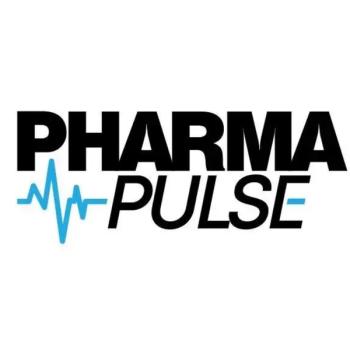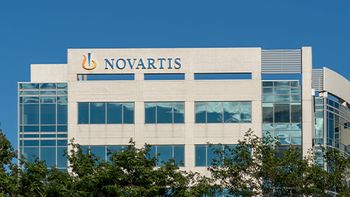
- Pharmaceutical Commerce - January/February 2009
ERP vendor adds lot-tracking to its supply-chain software
Meanwhile, GS1 UK touts the success of a recent track-and-trace pilot
The recent re-opening of the Tylenol poisonings case from the 1980s (generated, in part, by recent press coverage of an alleged suspect) and the daily additions to the list of peanut product recalls are high-profile reminders of the importance of a fundamental supply chain function: lot tracking. In two unrelated industry developments, a lot tracking function has been bundled with an enterprise resource planning (ERP) system, and track-and-trace capability based on RFID technology has been demonstrated.
Software provider Deacom Inc. (Wayne, PA) announced in late January ERP software that integrates lot tracking functionality with such other pharmaceutical business processes as purchasing, inventory management, production, sales, formulation, regulatory reporting, and accounting. The Deacom software addresses “the root of all evil in lot tracking: Catching up the system later on,” says company founder Jay Deakins.
Achieving true lot tracking—where raw materials can be traced seamlessly from receipt through shipment—requires three things, Deakins says: Integrating your business processes in one system, prohibiting negative inventory, and posting transactions in real time. Negative inventory is the theoretical result of catching up the system later on, or not posting transactions in real time. The Deacom software stops that process by prohibiting negative inventory.
“Negative inventory and true lot tracking cannot coexist,” Deakins says. “By shipping products that contain items you haven't yet received in your system, you’re shipping from fictitious lots,” he says, conjuring memories of the circular logic in Catch 22, the Joseph Heller novel. “In a recall, you'd have to spend hours or even days searching original records to try to track those items, and there's no guarantee you’d be able to find all of them.” That’s likely one of the reasons the list of peanut-product recalls grows every day, as more research uncovers more affected products.
Tracking by bar code
The Deacom software facilitates lot tracking by generating item lot data on bar code labels. Hand-held scanners then record the data in the system and track items in real time as they move through inventory, production, quality control, and shipment. Item history and current status are detailed by date, time, and user in a full lot tracking report.
The ERP software is well positioned against that from large, established ERP providers, says Deakins. “We handle the vertical markets better than they do,” he says. “We don’t worry about every industry under the sun.” In fact, Deacom cut its teeth on software for the food industry, which it was able to parlay into the pharmaceutical industry by capitalizing on regulatory, business process, and supply chain similarities. Deakins sees another competitive advantage in his product’s integration. “We provide a single solution, our competitors use multiple systems,” he says.
“If you use multiple software systems to manage your business, you're prone to workarounds and less able to control against errors," he says. “That makes compliance difficult to achieve, and it adds time to the already time-sensitive product recall process.”
Although the Deacom software as configured includes bar code capability, RFID technology is available as an upgrade. And though bar code technology is clearly established in the pharmaceutical supply chain, RFID is beginning to pass milestones on its way to adoption.
Track and trace demonstration
One such milestone was passed in European in late January, when 15 different types of drugs were tracked from their origins at drug manufacturing/packaging plants in Ireland and the Netherlands to their final destination, the pharmacy department at Barts and the London NHS Trust. The demonstration was part of the Building Radio Frequency Identification Solutions for the Global Environment (Bridge) project. Using GS1 standards, the mass serialization solution meets worldwide pharmaceutical regulations on authentication and track and trace, according to an announcement from GS1.
Data carriers, including GS1 bar codes (data matrix) and EPC/RFID tags, were used in the pilot to enable the full traceability of each drug product in the supply chain on all levels of packaging (item, case and pallet), and to monitor the progress of its transportation trucks. Traceability information was recorded in and out of each supply chain participant’s custody. All data stored in the Electronic Product Code Information System (EPCIS, a GS1 standard) provided real-time visibility of tracked products.
“The success of the pilot demonstrates that the technology required to implement a full international supply chain traceability system using GS1 standards is available today,” says GS1 UK CEO Gary Lynch, in the announcement.
Articles in this issue
over 16 years ago
Closing The Circle On Patient Adherenceover 16 years ago
3PLs Rise in Forward-Thinking Supply Chain Modelsover 16 years ago
A Pitched Battle in Cardiovascular Drug Marketingover 16 years ago
Wyeth Loses Supreme Court Case Over 'Implied' Pre-Emptionover 16 years ago
Syringe Design Gets a Makeoverover 16 years ago
Refinements in Cold Chain Secondary Packagingover 16 years ago
Inmar Rebrands Reverse-Logistics and Related Business Unitsover 16 years ago
The Packaging Contribution to Patient Adherenceover 16 years ago
Moving the Dial on Patient AdherenceNewsletter
Stay ahead in the life sciences industry with Pharmaceutical Commerce, the latest news, trends, and strategies in drug distribution, commercialization, and market access.





